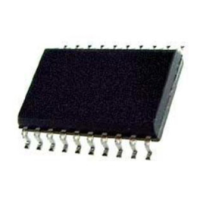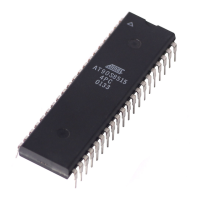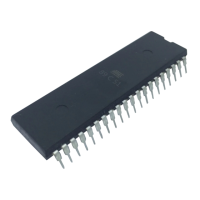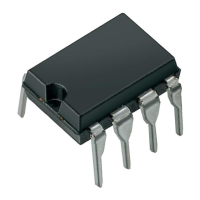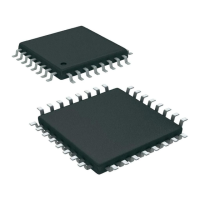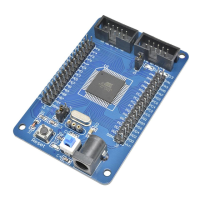AT90S2313
3
The AT90S2313 provides the following features: 2K bytes of In-System Programmable Flash, 128 bytes EEPROM,
128 bytes SRAM, 15 general purpose I/O lines, 32 general purpose working registers, flexible timer/counters with compare
modes, internal and external interrupts, a programmable serial UART, programmable Watchdog Timer with internal oscilla-
tor, an SPI serial port for Flash Memory downloading and two software selectable power saving modes. The Idle Mode
stops the CPU while allowing the SRAM, timer/counters, SPI port and interrupt system to continue functioning. The power
down mode saves the register contents but freezes the oscillator, disabling all other chip functions until the next external
interrupt or hardware reset.
The device is manufactured using Atmel’s high density nonvolatile memory technology. The on-chip In-System Program-
mable Flash allows the program memory to be reprogrammed in-system through an SPI serial interface or by a
conventional nonvolatile memory programmer. By combining an enhanced RISC 8-bit CPU with In-System Programmable
Flash on a monolithic chip, the Atmel AT90S2313 is a powerful microcontroller that provides a highly flexible and cost
effective solution to many embedded control applications.
The AT90S2313 AVR is supported with a full suite of program and system development tools including: C compilers, macro
assemblers, program debugger/simulators, in-circuit emulators, and evaluation kits.
Pin Descriptions
VCC
Supply voltage pin.
GND
Ground pin.
Port B (PB7..PB0)
Port B is an 8-bit bi-directional I/O port. Port pins can provide internal pull-up resistors (selected for each bit). PB0 and PB1
also serve as the positive input (AIN0) and the negative input (AIN1), respectively, of the on-chip analog comparator. The
Port B output buffers can sink 20mA and can drive LED displays directly. When pins PB0 to PB7 are used as inputs and
are externally pulled low, they will source current if the internal pull-up resistors are activated. The Port B pins are tri-stated
when a reset condition becomes active, even if the clock is not active.
Port B also serves the functions of various special features of the AT90S2313 as listed on page 48.
Port D (PD6..PD0)
Port D has seven bi-directional I/O port with internal pull-up resistors, PD6..PD0. The Port D output buffers can sink 20 mA.
As inputs, Port D pins that are externally pulled low will source current if the pull-up resistors are activated. The Port D pins
are tri-stated when a reset condition becomes active, even if the clock is not active.
Port D also serves the functions of various special features of the AT90S2313 as listed on page 53.
RESET
Reset input. A low level on this pin for more than 50 ns will generate a reset, even if the clock is not running. Shorter pulses
are not guaranteed to generate a reset.
XTAL1
Input to the inverting oscillator amplifier and input to the internal clock operating circuit.
XTAL2
Output from the inverting oscillator amplifier
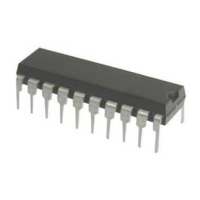
